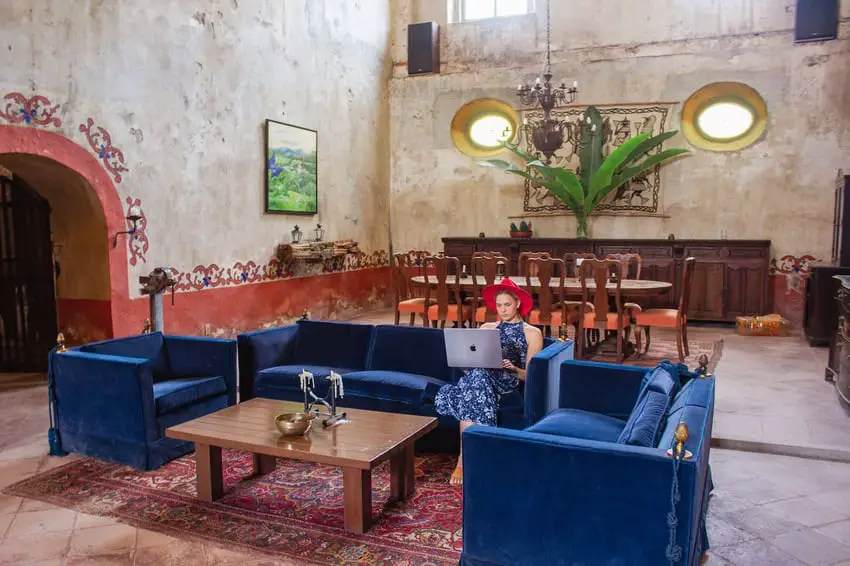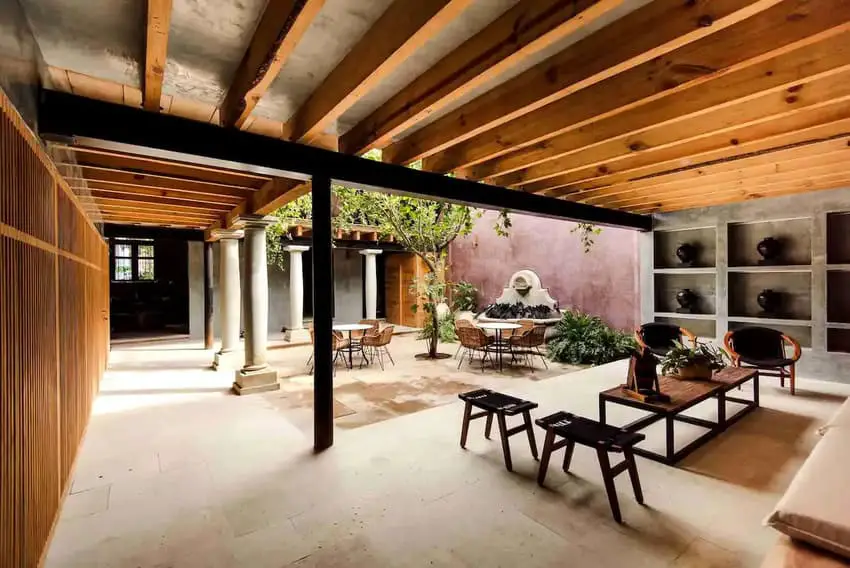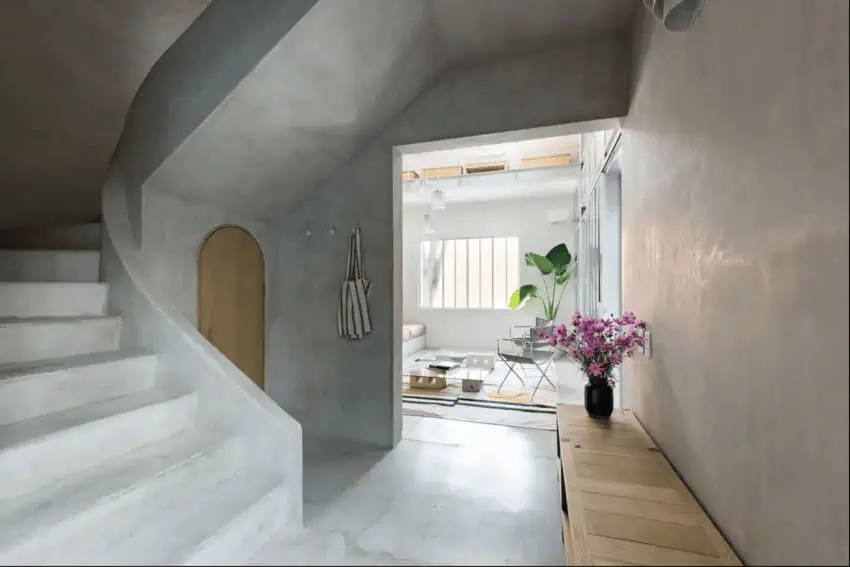The restored traditional houses of modern Mexico

As the monumental archaeological sites around the country can attest to, people have been building in Mexico for a very long time. They’ve also been reusing old sites for just as long: the Mexica found people living in the deserted city of Teotihuacán, and the Spanish later used the Great Pyramid of Tenochtitlán to build their own cathedral in Mexico City. True to this tradition, recent decades have seen a boom in architects remodeling traditional houses with a contemporary touch while preserving their historical essence.
In general terms, colonial architecture in Mexico developed during Spanish colonization, which began in 1519 and lasted until the first decade of the 19th century. Spanish Colonial houses feature unique construction elements such as high ceilings and rooms arranged around an inner courtyard, typically surrounded by columns. Gabled roofs provided ventilation, while balconies allowed residents to enjoy fresh air while maintaining their privacy and serving as a sign of social status. Baroque and Neoclassicism were this period’s most influential architectural movements.

During the 19th century, Mexican architecture was strongly influenced by European trends, both in building styles and materials, as the national elite worked to construct an image of a modern country. Neoclassicism remained strong, although there was a mix of styles being worked with. The Mexican Revolution opened a new chapter in Mexican architecture, with postrevolutionary modernization changing the face of the country’s cities.
What’s referred to as traditional architecture mostly encompasses the periods before the Revolution. When exactly the newer movement of restoring traditional houses began is unclear, but what’s undeniable is that architects are creating breathtaking modern spaces while maintaining local and national heritage. Follow along for some of the most impressive examples of this movement — almost all of which you can book a stay in yourself.
Finca El Fortin


This is amazing 16th-century building located within Hacienda Santa Cruz in Morelos. Its main house is an adaptation of the old town’s cathedral. The surrounding sugar cane fields and old ruins, combined with modern elements, create a dreamy composition.
The pool, library, and wooden staircase are beautiful. You can now rent it through an Airbnb experience that allows you to enjoy this historical setting while relaxing on an unforgettable holiday.
Tixnuc


Literally situated in the middle of the jungle, Tixnuc is a restored 17th-century hacienda located in the town of Samahil, 45 minutes outside of Mérida, Yucatán. The site lay in ruins for more than a century until a team of six star architects worked their magic: Jorge Carlos Zoreda, Mario Peniche López, Alejandro Vales García, Augusto Quijano, and the firm Muñoz Arquitectos.
It is a very special place because the architects preserved the ruins with minimal interventions, such as a modern ceiling, doors, and floors and a small swimming pool. Nowadays, this place can be rented for events or vacations.
Casa Vagantes San Sebastián


This house in Mérida was built in the early 20th century, but you wouldn’t know it from the outside, as its designers have given it a delightful makeover. With a beautiful ceramic floor in shades of yellow and soft brown, the atmosphere will transport you back to the classic homes of the Mérida bourgeoisie. The design is both simple and refined. You can stay here through Airbnb, a delightful experience for your senses, while the pool in the central courtyard provides a refreshing escape.
Casa Escuela


A former school transformed into a residence for artists in the heart of Mérida, this building preserves most of its original walls, now worn by time. These interact with modern elements such as the furniture, floors, carpentry, a beautiful pool in the central courtyard, and some ceramics incorporated into the structure.
One of Casa Escuela’s unique features is that the facades have been preserved in their original state. You can stay in this house as a guest, use it for events, but its main purpose is to serve as an inspiring place for artists to develop their work through residencies. You will also find workshops, wellness events, and culinary experiences.
Casa Serena


In the heart of downtown Oaxaca, with a beautiful facade of wooden doors, you’ll find Casa Serena. Discreet from the outside, this house is a stunningly renovated space that combines the layout of colonial houses — such as the central courtyard with an included tree — high ceilings, and open spaces with modern handcrafted furniture and exquisite details like futuristic lamps.
The colors of the walls, the outdoor bathtubs, the private patio, and the wooden paneling of the rooms create a perfect atmosphere of luxury and history. You can rent it through Airbnb, and it can accommodate up to 12 guests.
Casa Mezcla


Mérida’s Casa Mezcla is a 19th-century house that has become famous among lovers of Mexican architecture for being a perfect example of the balance between tradition and modernity. The pool area is inspired by the blend of the old wall and a rustic fountain that leads to a modern pool.
The design of the central courtyard features a terrace with the classic arch of colonial houses, resulting in a beautiful aesthetic. The furniture is rustic, while the details of the house are very modern. The roof is adorned with plants, and you can enjoy delightful hammocks. You can rent this bed and breakfast through Airbnb or directly on their website.
Casa Moro
This 19th-century neoclassical house preserves the essence of the colonial homes in the old town of Guadalajara. The original floors, high ceilings, two courtyards, a large entrance hall, and some pieces of old furniture, mixed with modern details, create an experience that allows you to feel the atmosphere of the high-class homes of past centuries in Mexico. The house’s design is a great example of how the central courtyard can bring abundant light and air to the rooms. The interventions in Casa Moro are minimal, and this perhaps is its main charm. You can rent it on Airbnb.
Casa Sirena


A classic in downtown Mazatlán. With its eccentric pink facade, this house has been renovated into a delightful mix of pinks inside, creating a surprisingly peaceful atmosphere. EPArquitectos designed a small swimming pool in the central courtyard that resembles a beautiful fountain from inside the house. The design of the staircase is also an aesthetic jewel made of cement.
Casa Tepeji


Casa Tepeji, in Mexico City’s Roma Sur, is outwarly discreet. On the inside, it’s a work of art thanks to architectural designer Ombeline de Laage. This house lies steps from the house where Alfonso Cuarón filmed his 2018 hit ”Roma.” The ceramic interventions in the patio are astonishing for the contrast of colors they create. The kitchen, roof terrace, spacious bedrooms and handmade furniture designed by Javier Reyes and Chuch Studio are truly remarkable. You can rent it on Airbnb here.
Ana Paula de la Torre is a Mexican journalist and contributor for Milenio, Animal Político, Vice, Newsweek en Español, Televisa and Mexico News Daily.
Source: Mexico News Daily

